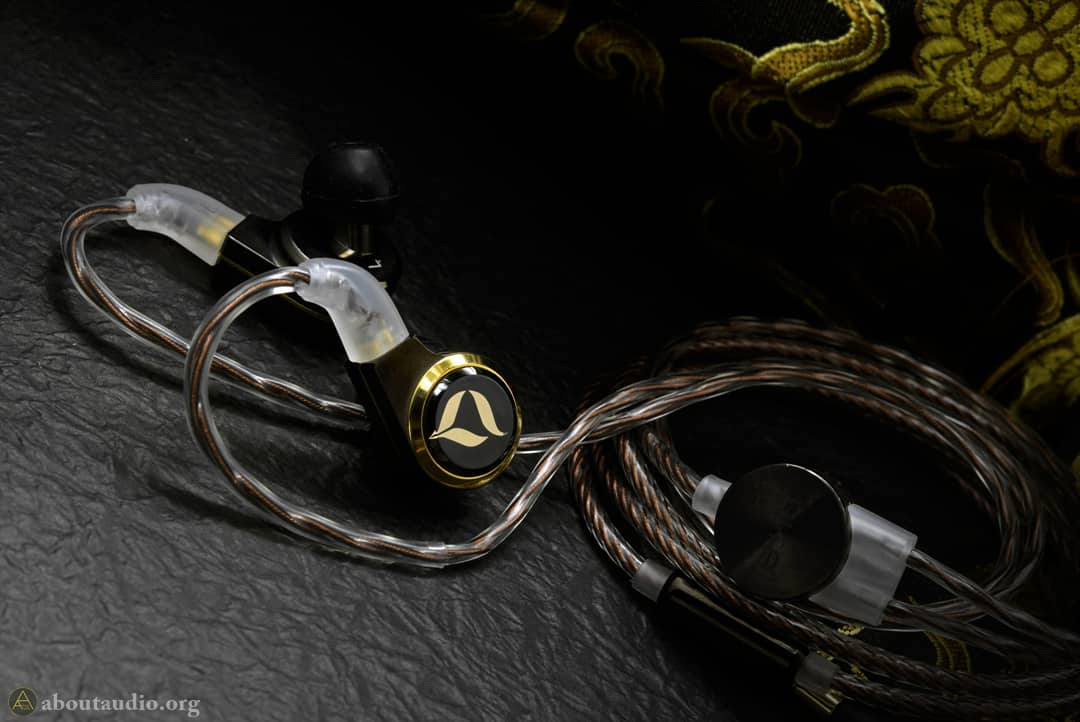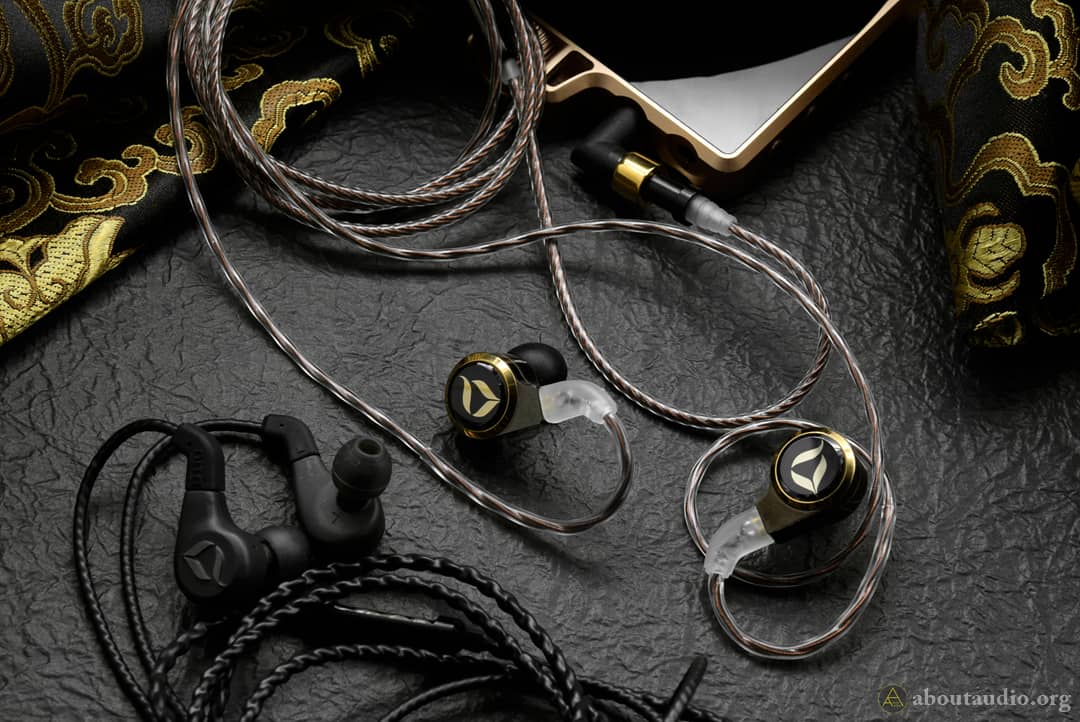
Dita Audio Dream XLS Review: Dream come true
The long-awaited product has finally come. Dita released another ultimate IEM that continues their previous flagship IEM, the dream. Explaining the background of this brand would be redundant enough, though I would like to address again that Dita Audio aims for premium-level products as well as using only one, but a damn good, dynamic driver. Having strong affection with Dita Audio since the days when they first released the Answer, the Dream XLS has been one of the products that I have waiting a lot.
Besides, it seemed like Dream XLS have received explosive attention when they first revealed a working product back in Japan Fujiya-Avic show. The people there, including I, had to stand in line for nearly an hour which only allowed 5-minute sessions for each. It was a short yet sweet experience that still made the long wait worth it. Anywho, let us now jump into the review and take a closer look at the looks, features, and most importantly, the sound.

Packaging
The packaging design and structure live up to Dita’s premium strategy, having a black theme with gold highlights and writings. Not only the design aspect but the packaging is also rich with accessories. Other than the earpieces, Dream XLS comes with a dedicated OSLO cable, switchable Awesome Plugs (2.5mm/3.5mm/4.4mm), a hard leather case, a soft leather pouch, 5 pairs of FAD E-Type eartips, 3 pairs of casual silicone eartips, 2 pairs of spare nozzle meshes, a set of Dita stickers, and a service pack which includes paperwork and a warranty card.
I especially like how the service pack is designed, edged with gold rims as well as a gold elastic band that keeps the service pack folded. This design sure makes me feel like I have just bought a luxury item instead of an IEM. Many may consider god packaging to be pointless, though I would say it sure matters a lot once entering into high-end products – as opening the package for the first time is one of the memorable experiences.

Earpieces – Design
Let us talk about the design. The overall shape of Dream XLS stands on the basis of the Twins (Fealty / Fidelity) but a whole lot luxurious and fancier. Fully machined from titanium, the obsidian black body is decorated with a gold rim surrounding the middle, a clean-cutted sapphire glass faceplate, and a thick gold rim that goes along the faceplate. Dita have explained that they intended Dream XLS to sport a watch-like appearance – not any watch brand, but a real luxurious designer one. The refraction happening at the Dita logo once viewed askew makes the earpieces look even more like a watch.
Besides, one interesting irony is that they actually had to manufacture the body of the earpieces from a luxury watch factory. Dream XLS was designed to have every inner structure, even the tiniest part, to be highly refined and zero tolerance for errors, which only left Dita to go for an actual watch manufacturer in Japan since other factories have failed to machine titanium with such fineness.

Earpieces – Specs
As expected, Dream XLS utilizes one large Ultra-Linear 10mm dynamic driver. If you are still struggling to get through with the thought of only having one driver for such highly-priced IEM, I must tell that you are yet to experience the inviolable naturality and precision of a zenith-level diaphragm, which are hard to be done with multi-driver IEMs. Although flagship IEMs come in all shapes and forms with an extreme level of performance, naturality is a field that a single DD still firmly holds the ground.
Applied with a special coating, the PET-based diaphragm is paired with a high-gauss magnet, an elastomer damper, a gold-plated soundwave guide, and lastly, the titanium shell serves as a sound box and completes the sound. To outpace a little, this completed sound visibly exceeds the original Dream in all aspects of sound; resolution, sensitivity, soundstage, texture, and the attractive tone. Speaking of the soundstage, the name “XLS” came from both “Xtra Large Soundstage” and “Xtra Linear Sound”.
Moving on, the diameter of the nozzle is around T400 with an average length, making it compatible with most aftermarket eartips. The meshes (or the filter) on the nozzle can be replaced with the pair ones in case they wear out after time. The earpieces are detachable via CIEM 0.78mm 2pins which are commonly found.

Cable – OSLO
The stock cable is just as special as the earphone is, called XLS-OSLO. Based on their newest standalone cable product, OSLO, Dita redesigned the wire structures and shielding materials, resulting in the outer skin to be softer and more resistible to oxidation and stiffening up. Speaking of OSLO, a brief explanation of the cable itself would be helpful. OSLO stands for “Oil Soaked Long-crystal Oxygen-free” cable comprised of PC Triple-C copper (AWG 30) imported from Japan.
Dita claims this specific oil to be “a squalene suspension of gold and silver nanoparticles, contributing substantially to improve signal transfer”. Having these nano gold and silver particles extremely refined (<0.000008mm), they would smooth out the micro irregularities on the surface of the wire, positively affecting signal transfer, contact, and impedance.

Cable – Materials / Awesome Plug
For those who have experienced using Dita’s previous standalone cable, the Truth cable, would know how springy and stiff that was (thankfully the sound was gorgeous, to say the least). Well, no need to feel traumatic for the OSLO cables though. The wires are very smooth and do not cause any microphonics, and of course, not springy at all.
Dita’s symbolical Awesome Plug is present as well, enabling users to easily switch between 2.5mm, 3.5mm, 3.5mm Pro (sold separately), and 4.4mm. You can even get the plugs switched to either Apple Lightning or Type-C, although those are not official and OEM made. Besides, just as the original Dream did, keep it noted that the 2pin connectors on XLS-OSLO are “half-recessed”, making it only compatible with 2pin IEMs with either flattened or half-recessed sockets.

Cable – Comparing the “twins”
You may have noticed that the color and the weaving style for XLS-OSLO are different from the original OSLO cables. The XLS-OSLO is specially tuned for Dream XLS and sports a darker brown color with tighter cable strands. The original OSLO cable is already soft enough, but XLS-OSLO is slightly softer with a better quality outer skin.
In terms of sound, both cables deliver a similar sound signature with their unique “OSLO effects”, which are decorating the sound with a buttery smooth yet rich texture details and tilting the brightness to a warm tone. Though the XLS-OSLO keeps the brightness a little closer to neutral, faster in strike and decay, and generating slightly lesser echos. I found this special version of OSLO cable to be very attractive, but Dita responded that they are not planning to sell these separately for the time being. Oh well, at least that makes this cable to feel even special.

Sound impressions – Lows
Now, for the sound. Dream XLS presents a full and rich W-shaped signature with a slightly bigger emphasis on mids. The lows are bold, and adamant, vividly exposing the sound ray of the bass. The reverbs are kept in a highly clean and clear manner, in which the quantities are only produced to just the right amount to give the bass a full body and emphasize the reverbs strongly and correctly. This “clear and clean” manner is continued throughout the low frequency, all the way down to the ultra lows. Based on excellent clarity and cleanness, ultra lows show similar exposure as the sub-bass, fully captivating the powerful, deep, and thick bass rumbles.
Unlike the original dream which the bass performance was not its strongest part, Dream XLS shows an outstanding bass quality and precision that reserves a solid spot in one of the best bass performance possible. Of course, there are numbers of basshead IEMs with superb bass performances that bring up huge ultra lows, but not many IEMs could present the vibrations and textures of the ultra lows clean and unexaggerated as Dream XLS does. Throughout the low range, the bass is fully packed with densities that are consistent and well distinguished from each other. No hollow/weaker areas are found in terms of details and keep all range flowing with coherency. The quantity is not exaggerated but it also never gets lacking which makes Dream XLS a very appropriate example of how to generate a clean bass.

Sound impressions – Overall characteristics
Before continuing any further, let me talk about “hardness”. Different brands desire different levels of hardness (or stiffness) when it comes to tuning their sound – not only for IEMs but also for players and cables. For example, Final Audio Design tends to aim for a softer texture. Dita Audio, on the other hand, tips over having a more solid texture which results in denser/faster strike and decay, along with denser crispiness.
The original Dream is still one of my very favorite IEMs and I enjoy jamming to it. But since Dream has one of the densest / brightest signatures, the IEM showed distinctive likes and dislikes among the users. Though for Dream XLS, the richness has been escalated once again but fear not, because the hardness has been decreased to a more natural degree as well as the brightness and intensity toned down appropriately. Thanks to that and the XLS-OSLO cable, the core of the sound is just as dense and solid while the textures are now topped with a creamy, smooth layer. The tonality is now very organic and sweet, while Dream presented a bit of a silvery tone.

Sound impression – Mids
Now as we come back to the main topic, how do the vocals sound? Dream XLS gears up once again as the sound approaches to the mid-range, showing an extreme level of precision and detail, almost to a dreadful extent but not overdone at all. With such a beautiful presentation, vocals carry a natural, clear tone that slightly tips over the brightness towards being cool – not cold, but cool. Dream XLS keeps its limits with the brightness and wouldn’t get fatiguingly bright. Upper mids would elegantly spread out like a blossom with a transparent, airy atmosphere.
Putting Dream and Dream XLS side by side, the vocals on Dream XLS are distinctively thicker in both density and actual thickness. While mids on Dream were rather thin and suitable for female vocals, Dream XLS shows a neutral, fuller-bodied thickness for the vocals which makes it suitable for listening to both male and female artists. And since this new flagship IEM continues the “Dream” legacy, I already had no doubts about how female vocals would perform on the XLS. But what really surprised me is that Dream XLS offers male vocals just as attractive and splendid as it did so beautifully with female vocals. Without the lower mids getting shadowed by the sub-bass, male vocals sing just as agile, lively, and powerful, forming a good harmony with the female vocals.
The sibilance might have been one of your concerns if you have experienced the Dream before. But living up to our expectations, Dream XLS had it wonderfully solved all spiky sibilances and made the sound “Xtra Linear”. Instead of killing the entire sibilant area, it would only add up a crispy bite to the vocals which only ends as an addictive enjoyment rather than something that would cause fatigue or discomfort. Though do keep in mind that Dream XLS still aims for a brighter sound with lots of treble details going on, so make sure to thoroughly understand your taste before making the big decision.

Sound impressions – Highs / etc.
Highs are active (or vibrant) as mids and also stand in a similar position, but with some actions taken to make them sound comfortable enough. The brightness and the quantity has been gently toned down once again while having a similar DNA from the mids, bringing an exciting and giddy vibrancy. It is vibrant, but the tone is pure as water and leaves no cluttering aftertaste. The high ends are also emphasized with transparency and airiness, giving a fully open-field atmosphere. I have been keen on maintaining a calm posture when testing gears as I have dealt flagship IEMs for a while now, but this glamorous upper ranges would really be hanging over my head for a long time after I listen. Extra rich but not extravagant.
The layering separation is also what I much enjoy from these, as it is surprisingly well-distinguished from each other despite the IEM only using a single driver. Using a single driver also led the headroom imaging to be kept natural and undistorted – perhaps Dita have beaten two birds with one stone. If you were wondering how could a single dynamic driver with close-up imaging possibly draw a large staging, the name XLS (Xtra Large Staging) explains itself. No exaggerated echos, no overpowering bass, no loosened up reverbs but done by largely scaling the sound with realistic headroom. Looking with a bird’s eye view, Dream XLS gives me the impression where the goods from the previous have now become much better while the bads are now all fixed and gone. Just the way I wished how the original Dream could improve.

Eartip / Cable recommendations
Let me first state that I am a big fan of using JVC Spiral Dot eartips, especially when pairing with a DD IEM. But having it felt since the Twins (Fealty / Fidelity), I am certain that Dita products are strictly tuned upon their stock eartips – the FAD E-Type. Surprisingly enough, this sweet and hallucinating sound would be maximized only by using the stock E-Type tips. No Spinfit, no Spiral Dots, no foam tips. Its true tone and charms will show themselves once paired with. For that reason, I exceptionally enjoy using E-type tips for all my Dita IEMs – Twins, P71, Dream, and the XLS.
Copper cables are definitely what to go for if looking for an upgrade cable, though there is no reason to look for an alternative other than the stock cable, really. The cable alone retails for $599, plus this particular OSLO version is custom-tuned for Dream XLS to sound great. If you still want to step further with the cable, I would suggest Rhapsodio Evolution Copper for a superior alternative as it perfectly maintains the nuance while upgrading nearly everything – resolution, staging, depth, color, etc.

Verdicts
It is always welcoming to see single DD IEMs marching into the flagship zone. The XLS well represents the benefits of building an IEM only with a single dynamic driver and reassuring us once again that driver numbers are not some sort of a scale that could tell how an IEM could perform. As an active Dream user, I can admit without a doubt that Dita has hit perfection with this one. From all the small complaints to the Dream’s major charms that I wished Dita would pursue, the XLS lives up all to that. For that reason, I would even go further and say that this is a dream come true. Dream XLS would be a very pleasable IEM not only for headstrong dynamic driver lovers but also for those who seek a crossover-free, Xtra rich sound with excellent phasing accuracy.
Dita Audio Dream XLS has been acquired by myself.
I am not affiliated with Dita Audio and none of my words were modded or asked to be changed.


